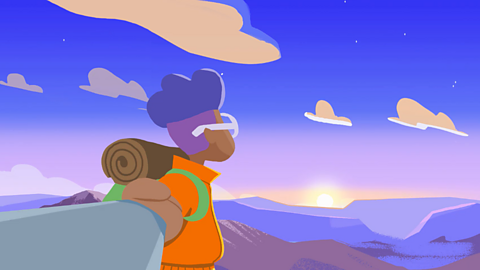Watch: Rivers
I’m in Sweden, following the route of a river that flows across the country, and out to the sea.
I’m starting from the beginning of the river which we call the source, here in the mountains.
Rivers often start in upland areas like this, from lakes, marshes and glaciers or even springs that bubble out of the ground.
A river has a channel with banks on both sides and a bed.
Around the main channel of the river is the flood plain where the river expands when it floods.
Rivers always flow downhill because of gravity, going where there is the least resistance, so they meander or move around obstacles like large rocks and hills.
Over time, they erode or wear away soil and rock to create canyons and gorges!
My kayak is being pushed along by the water as it gradually flows downhill.
The water looks quite flat here, but in other places it can be much steeper, like waterfalls!
Rivers like the Amazon and Nile are nearly 7,000 kilometres long and can be several kilometres wide in some places.
Some rivers flow into lakes or other larger rivers.
Finally, I’ve reached the mouth of the river, which in this case flows out to the sea.
I think I’m going to need a bigger boat!
What is a river?

A river is a moving body of water that drains the land.
It flows from its source on high ground, across land, and then into another body of water. This could be a lake, the sea, an ocean or even another river.
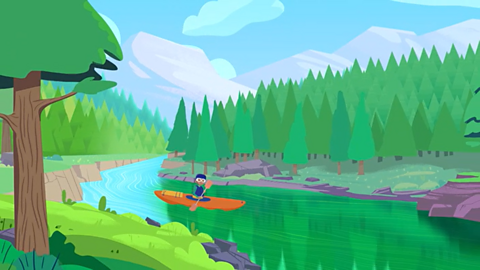
A river flows along a channel with banks on both sides and a bed at the bottom.
If there is lots of rainfall, or snow or ice melting, rivers sometimes rise over the top of their banks and begin to flow onto the floodplains at either side.

How are rivers formed?
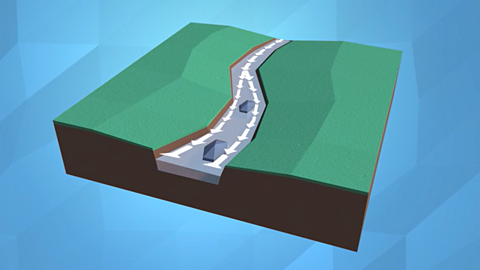
Rivers usually begin in upland areas, when rain falls on high ground and begins to flow downhill. They always flow downhill because of gravity.
They then flow and bend (meander) as they cross the land or go around objects such as hills or large rocks. They flow until they reach another body of water.
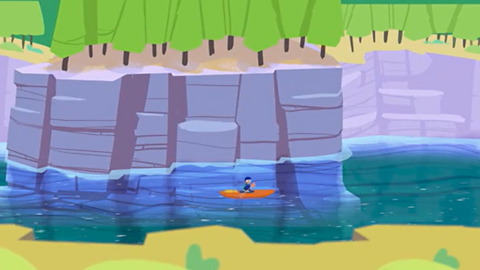
As rivers flow, they erode (or wear away) the land.
Over a long period of time rivers create valleys, or gorges and canyons if the river is strong enough to erode rock. They take the sediment (bits of soil and rock) and carry it along with them.
Small rivers are usually known as streams, brooks or creeks. If they flow from underground they are called springs.

Why are rivers important?
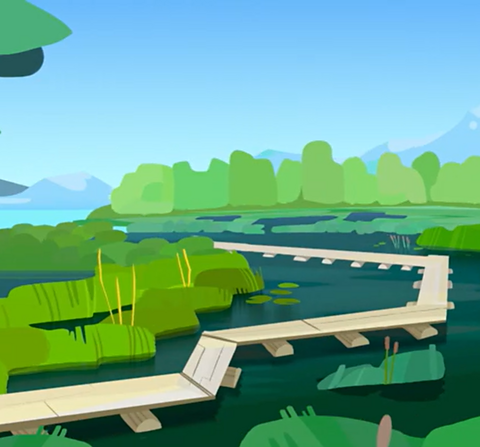
Rivers provide:
- habitats for wildlife
- freshwater for settlements, agriculture, and other industries
- resources for leisure and tourism
- navigation for exploration, trade and commerce
- a means to transport nutrients and sediment
- changing levels of energy that shape the landscape
- energy for hydro-electric power

Rivers and the water cycle
- Rivers are an important part of the water cycle. They are responsible for transferring water to oceans.
- Human activity is responsible for the pollution of rivers and oceans, and for some increased flooding events.
- Flooding and drought can have catastrophic impacts on wildlife and people.
- Careful environmental management can reduce flooding and pollution.
Did you know?
- Most of the capital cities of the world were built on or near rivers. This was because it gave settlers access to freshwater and easy transportation for trade.
- The Nile is the longest river in the world.
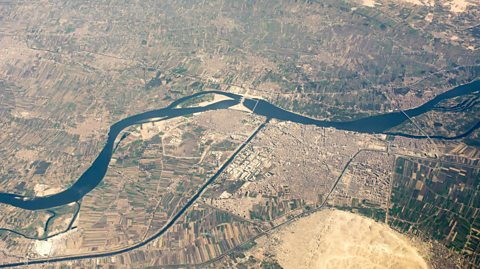
- The second longest river in Europe, the Danube, passes through four capital cities: Vienna (Austria), Bratislava (Slovakia), Budapest (Hungary), and Belgrade (Serbia).
- The Severn is the longest river in the UK.
Watch: What do rivers look like?
Activities
Activity 1: Fieldwork
Visit your local waterway, whether this is a canal, stream or river.
- Note on a map where you are and make a sketch map showing the key human and physical features.
- Note the time of day and the weather.
- Observe who is using the waterway and how. This could include anglers, boaters, wildlife and walkers for example.
- Always be aware of safety near water and think about minimising risk.
Activity 2: Quiz – Rivers
Bitesize Primary games. gameBitesize Primary games
Play fun and educational primary games in science, maths, English, history, geography, art, computing and modern languages.

More on The natural world
Find out more by working through a topic
- count16 of 16
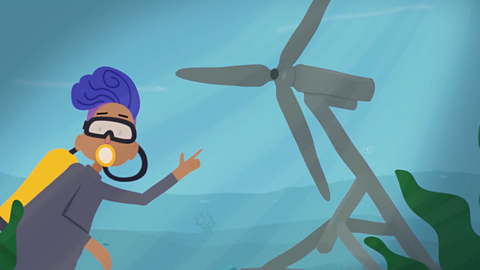
- count1 of 16
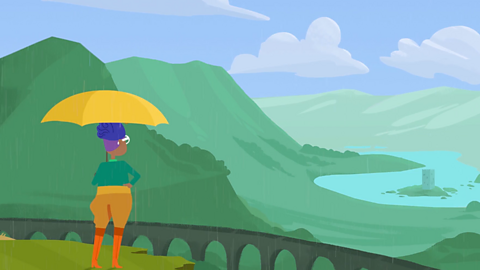
- count2 of 16

- count3 of 16
